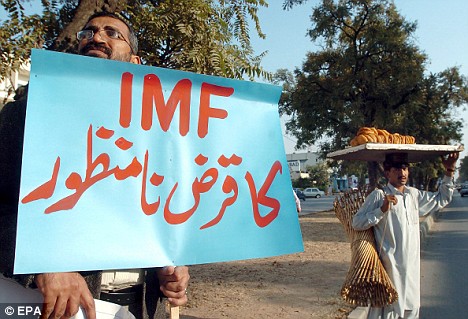Required: an array of microeconomic reforms
If one is to believe our government’s recent accounts, Pakistan’s economic fortunes are looking up. Energy situation has improved, the IMF has given a good report on the measures thus far to address the fiscal imbalance, the KSE has shown a strong resilience and is stable, and the country seems to be successfully meeting its obligations on external loan repayments. The economy’s growth rate (if not higher) will perhaps be sustained at the 4 per cent level and the recent announcement by the European Union of awarding the GSP+ status to the Pakistani textile exports augurs well for the overall exports of the country going forward – as textiles accounts for nearly 60 per cent of the national exports.
Yet, the mood in the country among businessmen and economists remains precariously balanced between cautious enthusiasm for a leadership that supposedly hails from the business community and worry that promised structural reforms might not be implemented.
That’s a worry that cannot be taken lightly and the one that needs to be absorbed by all Pakistanis. With each passing day, the ones who are employed are finding it increasingly difficult to keep up with the rising inflation and to balance their monthly household domestic budget and the ones who are unemployed are getting more and more pessimistic on finding a decent job in the near future.
In the endless national debate about the importance of macro-economic budgetary and monetary policies, insufficient attention is often given to the dull, often politically toxic pile of smaller, boring and rather unfashionable policy challenges that can be critical to restarting a faltering economy. In order to resurrect an economic downturn, many countries have had to take on those challenges, including calcified part of ‘old Europe’ like France and Italy, emerging nations like India, and even, the United States, with its shortsighted slant towards consumption in place of saving and investment.
China’s new leadership has also recently announced fresh and in many ways landmark economic reforms to rebalance a Chinese economy which was beginning to show signs of fatigue.
Pakistan’s problems may vary slightly from the ones confronting the developed economies, but in its own peculiar way the Pakistani economy is also shackled by its rigidities. While some export-oriented textile industries or a few FMCG companies may have remained competitive (mainly through their own management efforts and entrepreneurship), the domestic economy as a whole remains straight-jacketed by a low-quality, inefficient and corrupt bureaucracy, tradition and overregulation. So, what is required is an array of microeconomic reforms – structural reforms.
Forget comparing Pakistan with the developed economies, even a comparison through the regional (South Asia, SAARC) prism clearly shows that the need for microeconomic reforms is glaring. All told, Pakistan’s labour productivity is 71 per cent that of India and 65 per cent that of Bangladesh and even this is based only on like-to-like output and does not take into account factors like quality and value addition.
Further, the return on capital for a small or medium sized venture undertaken in Pakistan when compared to a similar investment in India, Bangladesh or Sri Lanka is equally unsatisfactory. And in spite of these adverse comparisons for Pakistan on regional un-competitiveness, no one is talking about meaningful changes in the rigid and outdated labour policies, which tend to be tools aiding bureaucratic corruption.
A small business operation of blending chemicals in Faisalabad, while opting to remain anonymous, counted 52 different government departments that need to be dealt with when running a small sized manufacturing facility. Even if each department pays one visit a quarter to the industrial premises, it means that on average nearly every working day the owner has to attend to the visiting government officials instead of attending to his/her business. The compliance costs (official and unofficial) of such government oversight coupled with the weight of the marginal cost of opportunity can be horrendous.
Further, the long promised special micro-reforms on facilitating online drug sales to increasing the number of women in the work force by expanding child care, to properly corporatizing the country’s fragmented farming industry are still to be realized due to either a lack of will cum focus or the sheer inability of the human resource in the government to frame and execute such finely detailed reforms.
The present tax policy is another area that seems to be going totally wrong. Instead of expanding the tax base the emphasis tends to be on punishing the existing taxpayers – the ones already in the tax net – thereby sending the wrong signals vis-à-vis both, investment and encouraging the documented sector.
What is required is to improve the prevalent tax policy: fewer loopholes, reciprocity, minimizing the contact between the taxpayer and the collector, lower rates on income and, down the road as the economy recovers, more revenue will automatically flow in and close the gaping budget deficits.
Given the past failures of the Pakistani political powers to take on sacred cows, to reign in the bureaucracy and to honestly clamp down on corruption, it is unlikely that even this time round any revolutionary reforms will be adopted by the present policymakers.
However, one does expect and hope that they will pay some attention to the above mentioned micro level reforms in order to at least put the economy in the right direction.



